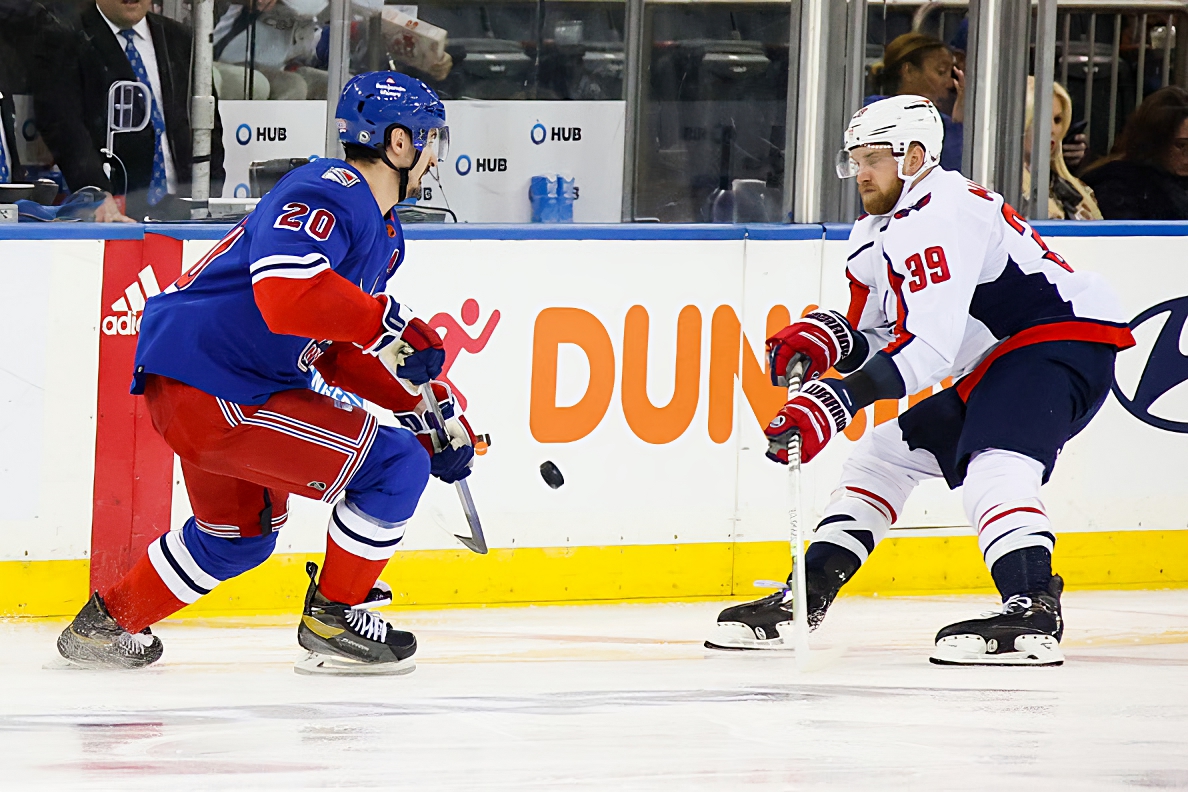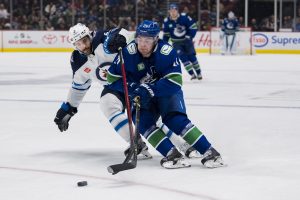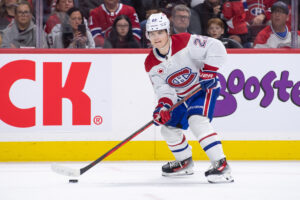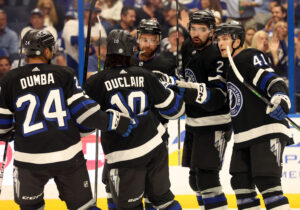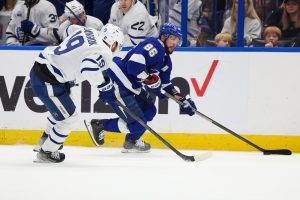NHL player development seems to always result in more questions than answers. How likely is it for a top pick to pan out? What makes a player a “steal”? Last Word On Hockey will be starting a new series on how to properly develop prospects from all different spots throughout the draft. This week’s piece involves draft picks in the back-half of the first round and how they were used early in their careers.
NHL Player Development Of First-Round Picks
In the span of 2005 through 2015, there were 84 total selections made between 16th overall and 30th overall on forwards playing in North America. Looking at all 84 forwards, they were split into different categories. Those categories were “Forwards Deemed NHL-Ready and Brought In Immediately When Ready,” “Forwards Near NHL-Ready and Brought In Immediately When Near-Ready,” “Forwards Rushed Slightly,” “Forwards Rushed,” “Forwards Forced,” “A Little Patience,” “Patience,” and “Too Much Patience.”
There were six forwards who fell into the sixth category, “patience,” on the list. Of those six players, three who made their NHL impacts in their DY+4 seasons. Those players were Chris Kreider, Anthony Mantha and Nikolay Goldobin. Today, let’s look at Kreider and Mantha.
In this piece, we will be using stats from eliteprospects (raw stats) and hockey-reference (ice time). Additionally, the analytics we are using are as follows: even-strength offence goals above replacement (EVO), even-strength defence goals above replacement (EVD), wins above replacement (WAR) and goals above replacement (GAR). Those analytics are from evolving-hockey (subscription required).
NHL Player Development Of Chris Kreider
Kreider, drafted 19th overall by the New York Rangers in the 2009 NHL draft, came out of the high school ranks with Phillips Academy in Andover, Massachusetts. In his DY-1 season, Kreider scored 26 goals and 15 assists for 41 points in 24 games, for 1.708 points per game. That ranked eighth out of the aforementioned 84 forwards in DY-1 production.
The following season with Phillips Academy, Kreider scored 33 goals and 23 assists for 56 points in 26 games, for 2.154 points per game. That ranked fifth out of those same 84 forwards in DY production. After that season, he would move on to the NCAA with Boston College. He would play three seasons with Boston College before making the jump to the NHL.
In his first season with Boston College, Kreider scored 15 goals and eight assists for 23 points in 38 games, for 0.605 points per game. That ranked 71st out of the 82 forwards still outside the NHL in DY+1 production. The following season, he scored 11 goals and 13 assists for 24 points in 32 games, for 0.75 points per game. That ranked 47th out of the 70 forwards still outside the NHL in DY+2 production. Finally, in his last NCAA season, Kreider scored 23 goals and 22 assists for 45 points in 44 games, for 1.023 points per game. That ranked fourth out of the 46 forwards still outside the NHL in DY+3 production.
How Kreider Was Used
Kreider would make the jump to the professional ranks after his third NCAA season. He would split between the AHL and NHL as a rookie. Playing in 48 AHL games, Kreider scored 12 goals and 11 assists for 23 points, a modest stat line for a young player. That allowed him to draw into 23 NHL games, averaging 10:07 time on ice per game. In that sheltered role, he scored two goals and three total points. Analytically, he was poor as well. His EVO (-0.8) and EVD (-1.2) were both below replacement level. With the poor even-strength stats, his WAR (-0.3) and GAR (-1.6) were just really bad. Overall, a bad first taste of the NHL.
Kreider would not let that stop him in his second year, however. Playing between the AHL and NHL again, he would only see six AHL games, where he scored two goals and assists for four points. Kreider would see 66 NHL games, where he took big strides. He averaged 15:44 per game, for a start, giving him a much, much larger role at the top level. That allowed him to break through with 17 goals and 20 assists for 37 points. Almost all of his analytics improved, with his EVO being the most noticeable (8.6). Meanwhile, his EVD (-1.6) took a step backwards. Despite that drop in defensive impact, his WAR (0.9) and GAR (4.9) were much better.
Kreider Becomes Full-Time NHLer And 20-Goal Scorer
In his third NHL season, he would stick around full-time. Kreider would play 80 of the 82 total games of the season, averaging 15:43 per game, a near-identical role. With more games to play in, he would score 21 goals and 25 assists for 46 points, a new career-high. Like year two, Kreider saw his EVD (-2.5) continue to fall. Unlike in year two, his EVO (8.1) dropped, but remained strong. Despite the fall in both even-strength categories, his overall game improved, based on his WAR (1.1) and GAR (5.7) improving.
After that third season, Kreider remained with the Rangers. He still plays there today. In the seven full seasons that followed (plus what he has done thus far this year), he has scored 205 goals and 158 assists for 363 points in 520 games. Included in that is his 52-goal campaign in the 2021-22 season. Safe to say that the young kid playing for Phillips Academy in Andover, Massachusetts had a strong NHL player development in the Rangers system.
NHL Player Development Of Anthony Mantha
Mantha, drafted 20th overall in the 2013 NHL draft by the Detroit Red Wings, came out of the QMJHL’s Val-d’Or Foreurs organization. In his DY-1 season, he scored 22 goals and 29 assists for 51 points in 63 games, for 0.81 points per game. That ranked 39th out of the aforementioned 84 forwards in DY-1 production. The following year, Mantha scored 50 goals and 39 assists for 89 points in 67 games, for 1.328 points per game. That ranked 24th out of those same 84 forwards in DY production. After being drafted, Mantha would play one more QMJHL season before going pro.
In his final QMJHL season, he scored 57 goals and 63 assists for 120 points in 57 games, for 2.105 points per game. That ranked first by a wide margin, amongst the 82 forwards still outside the NHL in DY+1 production. As mentioned, he went pro after this season, but not to the NHL.
Mantha AHL Development Time
Rather than going to the NHL after a phenomenal QMJHL season, Mantha would instead play two seasons in the AHL. In his first, he scored 15 goals and 18 assists for 33 points in 62 games, for 0.532 points per game. That ranked 63rd out of the 70 forwards still outside the NHL in DY+2 production.
Once again remaining mostly in the AHL (he had a 10-game NHL stint, missing the benchmark set of 15+ games), he played 60 games and scored 21 goals and 24 assists for 45 points, for 0.75 points per game. That ranked 11th out of the 46 forwards still outside the NHL in DY+3 production. After that second AHL season and short NHL stint, Mantha would finally get an extended look at the NHL level.
How Mantha Was Used
Still seeing some AHL time in his first true NHL season, he would play 10 games there. In that short stint, he scored 10 points, including eight goals. He earned a call-up to the big club. Mantha played 60 games, averaging 15:54 per game, with the Red Wings. A pretty big role for, essentially, a first-year player. He would not disappoint, with 17 goals and 19 assists for 36 points. His analytics were also extremely impressive. His EVO (7.8) and EVD (2.2) were both excellent for first-year players, and his WAR (1.6) and GAR (8.5) reflected those strong numbers.
Mantha, in his second season, would play entirely in the NHL. Playing in 80 of the 82 games, he would average 17:18 per game, a jump up from the year prior. With that bigger role and top-six minutes, Mantha scored 24 goals and assists for 48 points. A decent stat line. His analytics took a small step back but remained impressive. Mantha’s EVO (6.6) was still good, while his EVD (0.9) showed he was not a liability. His overall game remained solid as well, reflected by his WAR (1.6) and GAR (8.0) remaining similar to the year prior.
Shortened Season Does Not Impact Mantha’s NHL Player Development
Again, playing entirely in the NHL, Mantha would miss some time, playing just 67 games. He would average 17:50 per game, however, seeing another raise in ice time. With the raise, despite playing fewer games, he would score 25 goals and 23 assists, matching year two’s point total of 48. Shockingly, however, his analytics would get worse in every category. His EVO (1.6) fell dramatically, while his EVD (0.6) fell, but only slightly. Additionally, his WAR (0.9) saw a small decline, and his GAR (5.0) would fall similarly to his EVO.
Despite the decline in his analytics, Mantha remained a solid player. Now playing with the Washington Capitals, Mantha has never been on pace to score less than 18 goals since his first year with 17. Unfortunately, every season since his third year has been shortened. Following that third season with Detroit, Mantha played just 85 more games with them, scoring 27 goals and 32 assists, for 59 points. He would be traded to the Washington Capitals, where he has since scored 21 goals and 29 assists for 50 points in 87 games, and counting.
Junior league stats via Elite Prospects, NHL stats via Hockey Reference, NHL analytics via Evolving Hockey.
Main Photo:


